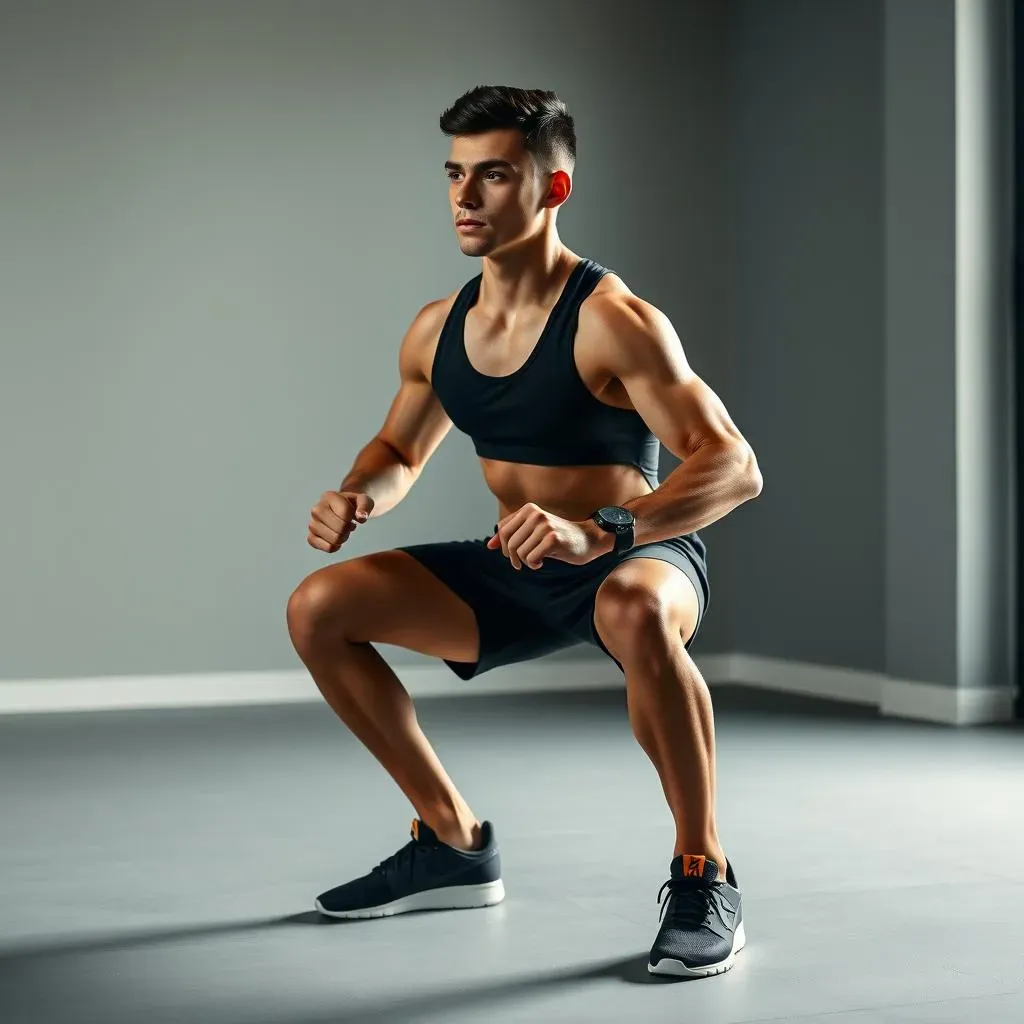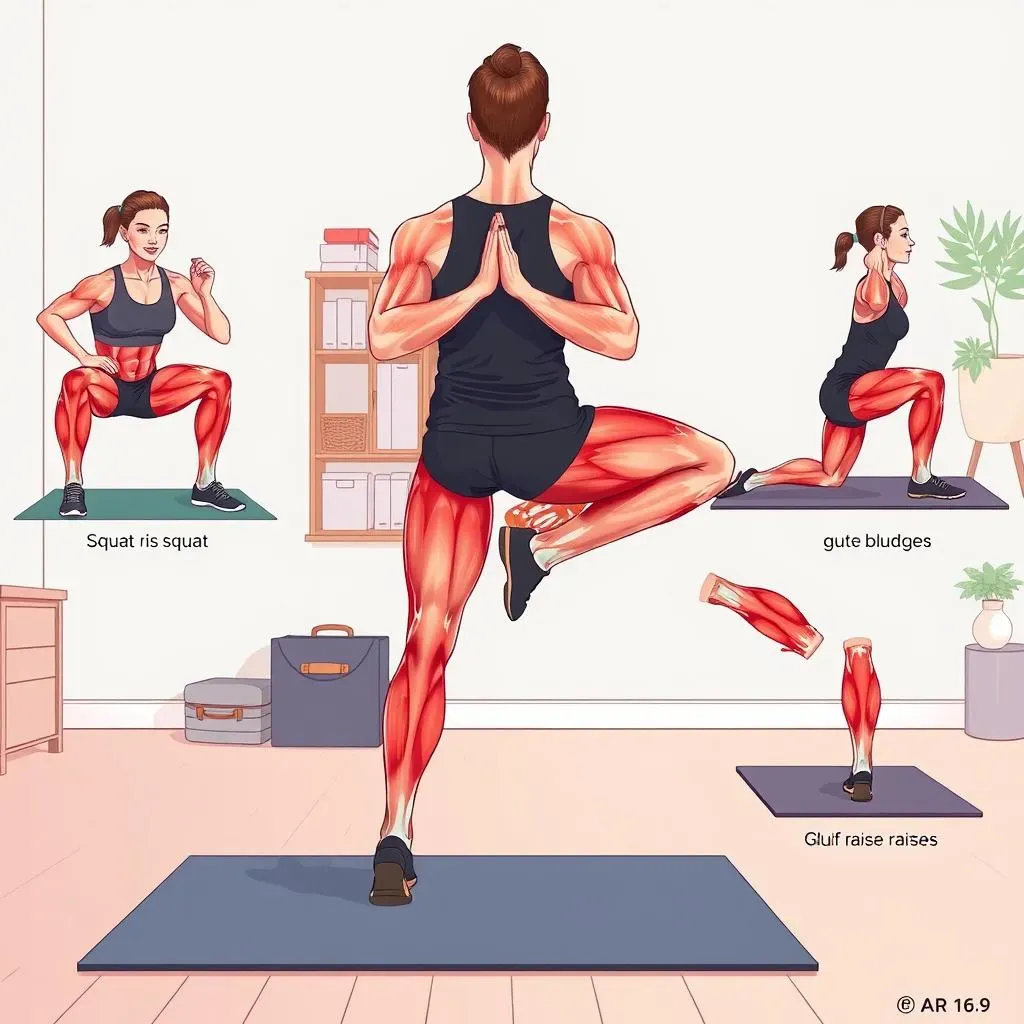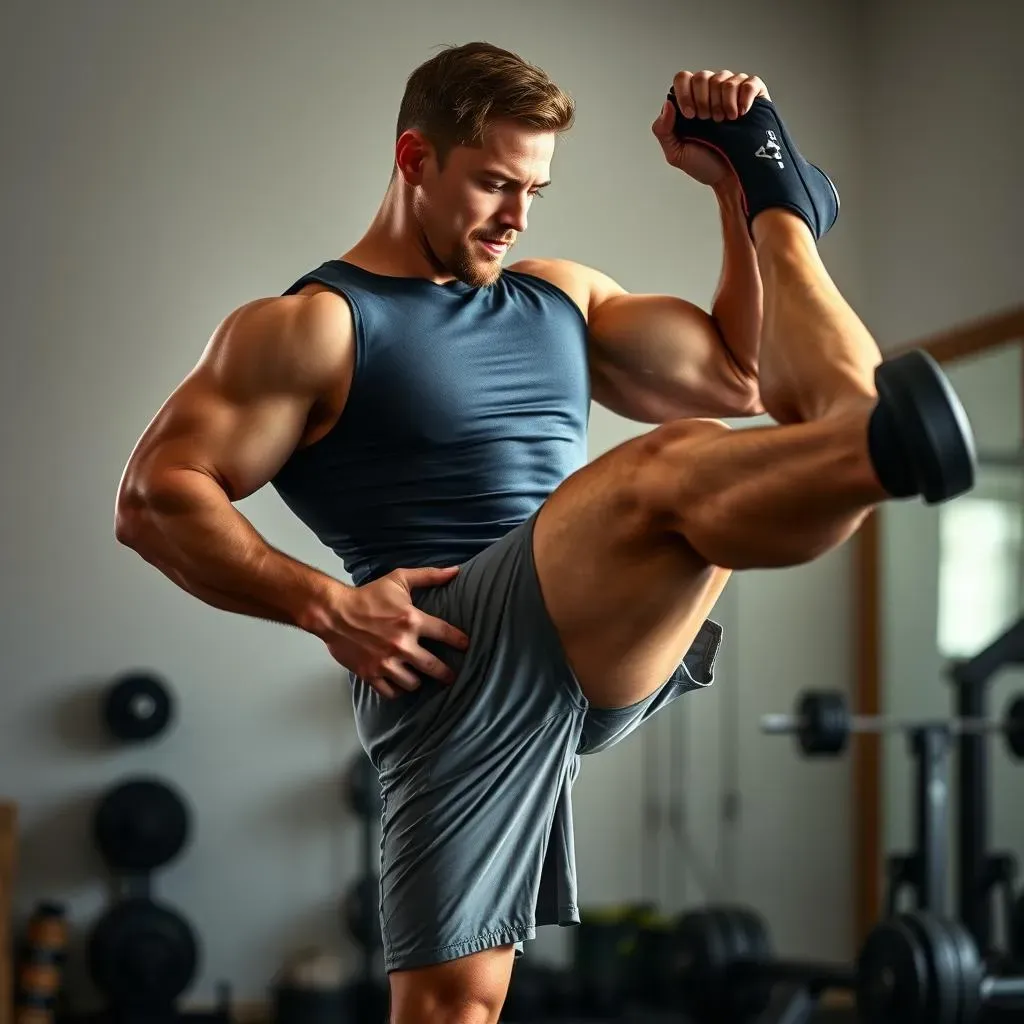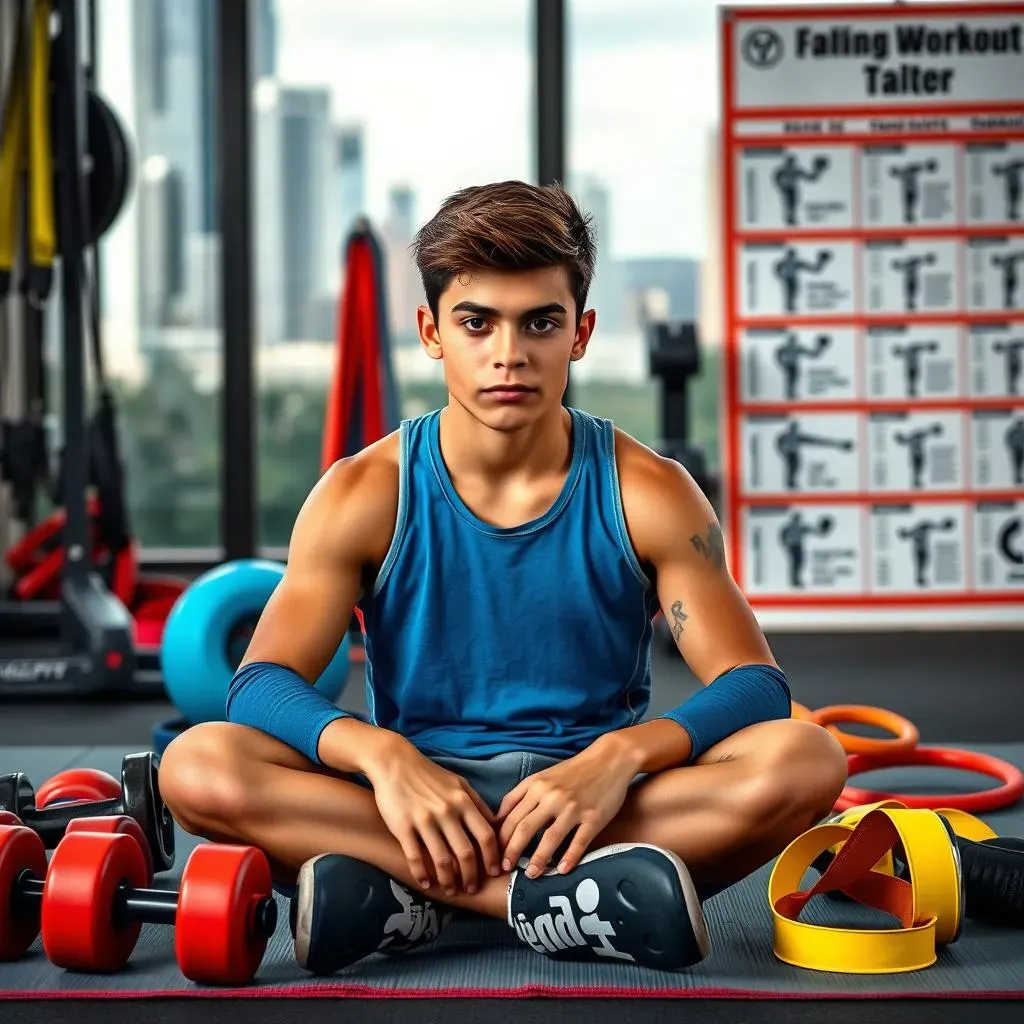Table of Contents
Are you an athlete looking to level up your game? Do you think you need a fancy gym to build powerful legs? Think again! This article is your guide to effective leg workouts at home for athletes. We all know that strong legs are the foundation for speed, agility, and power in any sport. Whether you're a runner, a basketball player, or just someone who loves to move, this guide is for you. We’re going to dive into why leg strength is crucial for athletes, even when you're not in a gym. I will show you the best bodyweight moves to get you started. Then, we'll crank it up a notch with some tips to make your home workouts even more intense. Finally, we'll wrap it up with how to create a killer leg workout plan that fits your needs. Get ready to build those powerful legs right from the comfort of your own home!
Why Athletes Need Strong Legs and How to Get Them at Home

Why Athletes Need Strong Legs and How to Get Them at Home
The Foundation of Athletic Performance
Let's be real, if you want to jump higher, run faster, or just be more stable on your feet, you need strong legs. It's not just about having big muscles, it’s about having functional strength that translates directly to your sport. Think of your legs as the engine of your body. If your engine is weak, your performance is going to suffer, no matter how good your upper body looks. I see so many athletes neglecting leg day, focusing only on the 'mirror muscles'. Don't be that guy, the secret to athletic success is in your legs.
Strong legs mean better balance, quicker changes in direction, and more power behind every move you make. Whether you're sprinting on the track or making a quick cut on the basketball court, your legs are the driving force. Neglecting them is like trying to drive a race car with a scooter engine. And that's why we need to get them strong, and we can do it at home.
Why Home Workouts Are a Game Changer
Now, I know what you're thinking: "I need a gym to get strong legs." That's just not true. You can build incredible leg strength right in your living room. Home workouts are convenient, they save you time and money, and they allow you to train on your own schedule. No more waiting for equipment or fighting for space. Plus, you can crank up your own music and get in the zone without distractions.
The beauty of home workouts is that they rely on bodyweight exercises. These are incredibly effective at building functional strength and improving your overall body control. You don't need any fancy machines, just your own body and a bit of space. Think of it as going back to the basics: the kind of training our ancestors used to do. This simplicity is powerful.
Benefit | Description |
|---|---|
Convenience | Train anytime, anywhere, without needing a gym. |
Cost-Effective | No gym memberships or expensive equipment needed. |
Functional Strength | Bodyweight exercises build strength that translates to everyday activities and sports. |
Flexibility | Workout on your own schedule and at your own pace. |
The Power of Bodyweight Training
Bodyweight exercises are not just for beginners. They're a fantastic tool for athletes of all levels. You can change the intensity and difficulty by just changing the way you do the exercise. It's a myth that you need heavy weights to get strong. You can make your bodyweight exercises challenging by slowing down your movements, increasing your reps, or changing the angles.
Plus, bodyweight training helps you develop a better mind-muscle connection. You become more aware of how your body moves and how to control it. That's crucial for injury prevention and maximizing your athletic potential. So, let's get started and unlock your leg power, right at home.
Essential Bodyweight Leg Exercises for Athletes at Home

Essential Bodyweight Leg Exercises for Athletes at Home
Okay, so you're ready to get started with some essential bodyweight leg exercises for athletes at home, right? I'm excited to share some of my favorites with you. We're not talking about boring, basic moves here. These are the exercises that will build real strength and power. Think of these as your foundational movements, the bread and butter of your home leg workouts. These moves are chosen because they engage multiple muscle groups at once, mimicking the movements you make in sports.
We're going to cover squats, lunges, glute bridges, and calf raises. Each one of these exercises will work your legs in a slightly different way, ensuring that you develop well-rounded strength. I'll walk you through each exercise, focusing on proper form and technique, because doing it right is more important than doing it fast. Trust me, once you master these, you'll be ready to take your leg workouts to the next level.
- Squats: The king of leg exercises, engage your quads, glutes, and hamstrings.
- Lunges: Great for balance and single-leg strength, hitting your quads and glutes hard.
- Glute Bridges: Isolate and strengthen your glutes and hamstrings.
- Calf Raises: Build those powerful calves for better jumping and sprinting.
Let's start with squats. You probably know this one, but let's make sure we're doing it right. Stand with your feet shoulder-width apart, chest up, and core engaged. Now, imagine you're sitting down in a chair, pushing your hips back and bending your knees. Keep your back straight and go as low as you comfortably can. It's important to control the movement, don't just drop down. The key is to feel the muscles working and keep your form perfect.
Next up are lunges. Step forward with one leg, lowering your body until both knees are at a 90-degree angle. Your front knee should be over your ankle, and your back knee should be close to the floor but not touching it. Push back up to the starting position and repeat on the other side. Lunges are great because they challenge your balance and work each leg individually. Remember, keep your core tight to maintain stability.
Exercise | Primary Muscles Worked | Key Benefits |
|---|---|---|
Squats | Quads, Glutes, Hamstrings | Builds overall leg strength and power. |
Lunges | Quads, Glutes, Hamstrings | Improves balance and single-leg strength. |
Glute Bridges | Glutes, Hamstrings | Strengthens posterior chain and core stability. |
Calf Raises | Calves | Increases calf strength and ankle stability. |
Now, let's talk about glute bridges. Lie on your back with your knees bent and your feet flat on the floor. Push through your heels to lift your hips off the ground, squeezing your glutes at the top. It is important to keep your core engaged and your back straight. Lower back down and repeat. This exercise is fantastic for targeting the glutes and hamstrings, which are crucial for power and stability.
Finally, calf raises. Stand with your feet flat on the floor. Then, rise up onto the balls of your feet, squeezing your calf muscles at the top. Lower back down slowly. You can do these on a flat surface or on a slightly elevated surface, like a step, for a greater range of motion. Don't underestimate calf raises; they are crucial for explosive movements.
These four exercises are the cornerstone of any effective leg workout at home. They are simple, yet powerful, and you can do them anywhere, anytime. Master these, and you will be on your way to stronger, more athletic legs.
Advanced Leg Training at Home: Adding Intensity

Advanced Leg Training at Home: Adding Intensity
Okay, so you've mastered the basics, right? Squats, lunges, glute bridges – you're crushing it. But now you're probably looking for that extra challenge, that next level. That’s where advanced leg training at home: adding intensity comes in. We're not just going to do the same old exercises; we're going to crank up the heat. Think of it like leveling up in a video game; you've got to unlock new moves and push your limits. It's all about finding ways to make those bodyweight exercises feel harder and more effective.
We're talking about plyometrics, single-leg variations, and slowing down the tempo to make your muscles work harder. We're going to make your legs burn in the best way possible, and you will feel a difference. I've seen so many athletes get stuck in a rut, doing the same workouts over and over. It’s time to mix things up, surprise your muscles, and see real progress. This is where the fun begins!
Plyometrics, or jump training, is a game-changer for building explosive power. Think jump squats, lunge jumps, and box jumps (if you have a sturdy box or step). These exercises force your muscles to work hard in a short amount of time, improving your speed and agility. They also make your workouts way more fun, in my opinion. I remember when I first started doing jump squats; it felt like I was flying!
Single-leg variations are another fantastic way to boost the intensity. Try pistol squats, single-leg deadlifts, or Bulgarian split squats. These moves challenge your balance and force each leg to work independently. This is essential for fixing imbalances and building functional strength. When you are doing a single-leg exercise, you can feel every muscle working. It's awesome.
Technique | Description | Benefit |
|---|---|---|
Plyometrics | Jump squats, lunge jumps, box jumps | Builds explosive power and speed. |
Single-Leg Variations | Pistol squats, single-leg deadlifts, Bulgarian split squats | Improves balance and single-leg strength. |
Tempo Training | Slower movements with controlled pauses | Increases time under tension and muscle activation. |
Don't forget about tempo training. Instead of rushing through your reps, slow down the eccentric (lowering) phase of each exercise. Pause for a second at the bottom, then explode back up. This increases the time your muscles are under tension, leading to more strength gains. Trust me, you’ll feel the burn in a whole new way. It's not about how fast you can do the exercise, it's about how well you can control the movement.
I've found that mixing these advanced techniques into my own workouts has made a huge difference. It’s not just about doing more reps; it's about making each rep count. So, get ready to push your limits, challenge your muscles, and take your leg workouts to the next level. Let’s make those legs stronger than ever!
Creating Your Perfect Leg Workout Plan at Home for Athletes

Creating Your Perfect Leg Workout Plan at Home for Athletes
Tailoring Your Workout to Your Needs
Alright, so now we’re talking about the fun part: creating your perfect leg workout plan at home for athletes. It's not about just throwing a bunch of exercises together and hoping for the best. You need a plan that fits your goals, your current fitness level, and your available time. Think of it as designing a custom suit; it needs to be tailored to your specific measurements. What works for one athlete might not work for another, so we need to be smart about it. I always tell people, the best workout is the one that you actually do consistently.
The first thing to consider is your training goals. Are you trying to build strength, improve endurance, or increase power? Maybe it's a mix of all three. Your goals will determine the types of exercises you choose and how many reps and sets you do. Also, consider the sport you play. A runner will need a different approach compared to a basketball player, for example. It's all about making your training relevant to your athletic goals. Don’t just follow a generic program; create something that's designed for you.
Goal | Focus | Example Exercises |
|---|---|---|
Strength | Lower reps, higher intensity | Single-leg squats, Bulgarian split squats |
Endurance | Higher reps, moderate intensity | Bodyweight squats, lunges, calf raises |
Power | Explosive movements, moderate reps | Jump squats, lunge jumps, box jumps |
Structuring Your Weekly Routine
Now that you know your goals, let's look at how to structure your weekly routine. Consistency is key, so it's better to have a manageable plan that you can stick to than an overly ambitious one that you'll abandon after a week. I recommend aiming for at least two to three leg workouts per week, with rest days in between to allow your muscles to recover. Remember, muscles grow during rest, not during exercise. It is important to listen to your body and adjust your schedule as needed.
When you're planning your workouts, start with a dynamic warm-up to get your muscles ready, followed by the main exercises. Finish with a cool-down, including some stretching to improve your flexibility. And don't be afraid to mix things up. You can alternate between different exercises, try new variations, and even change your workout environment. The more you enjoy your routine, the more likely you will stick to it. It's your workout, make it work for you!
"The key is not to prioritize what's on your schedule, but to schedule your priorities." - Stephen Covey
